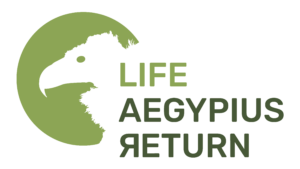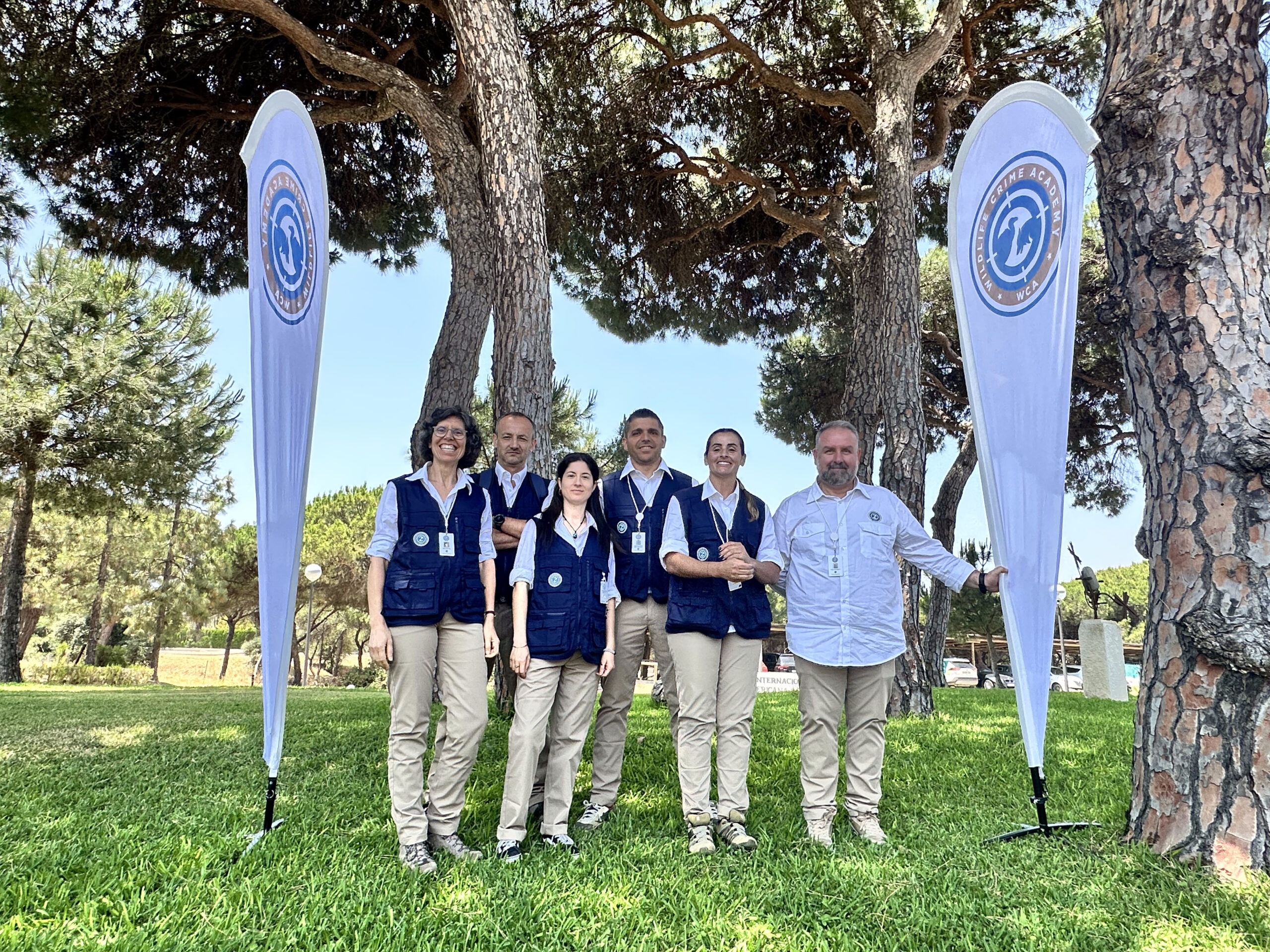Between 20-22 June, partners of the LIFE Aegypius Return project met at the Reserva Biológica Campanarios de Azaba (RBCA), Spain, a natural area managed by the project partner Fundación Naturaleza y Hombre (FNYH). In this second partners’ meeting, essential steps were taken to develop the upcoming planned actions, with external entities from Portugal and Spain crucial for the implementation of the project also joining the meeting. Meanwhile, project partners started tagging the first wild-hatched Cinereous Vulture chicks (Aegypius monachus) of this season with GPS transmitters.

Inter-institutional collaboration for Cinereous Vulture conservation
The agenda included meetings with sectoral working groups, essential for making decisions on planning future project actions. In addition to the consortium partners, the plenary session was attended by the Instituto de Conservação da Natureza e das Florestas (ICNF) representatives from the Central Services and the North, Centre and Alentejo regional delegations, including technicians, directors and rangers. The Junta de Extremadura (Spain) was also represented by the director general and a nature conservation technician.
The participation of these external entities is highly relevant to implementing the project’s actions. The discussions were fundamental for the project operationalisation and for the common understanding, maintaining and celebrating an atmosphere of transparency and inter-institutional collaboration that has guided this project since its inception.


Sharing best practices and project results
Project partners shared the progress of the monitoring actions ongoing on the four Cinereous Vulture colonies currently settled in Portugal, at Douro International Nature Park, Serra da Malcata Nature Reserve, Tejo International Nature Park and Herdade da Contenda.
The results are encouraging: there has been an increase in the number of occupied nests and wild hatchlings born in Portugal compared to 2022.
On the third day of work, partners engaged in the monitoring actions had the chance to exchange experiences during the visit to Campanarios de Azaba Reserve and to the vulture feeding station that FNYH manages. There was also a discussion about the impacts on the local Cinereous Vulture population of the wildfire that happened this May in Sierra de Gata, an important breeding area for the species.




Tagging the first wild-hatched Cinereous Vulture chicks
During the meeting, partners and technicians responsible for monitoring the colonies and marking wild-hatched chicks with GPS transmitters participated in a training session at the Wildlife Recovery Centre AMUS – Acción por el Mundo Salvaje. To ensure a coherent intervention across the four colonies, partners discussed important methodologies for tagging birds and collecting biological samples. The biological samples will allow us to assess the health status of the offspring, contributing to the goal of mitigating threats and reducing the mortality of the species. We thank AMUS for their collaboration and availability to host this workshop, with the visit to their facilities.


The first wild-hatched Cinereous Vulture chicks were tagged in three colonies last week. The marking process includes collecting biological samples, ringing and placing a GPS transmitter, which will enable project partners to follow the movements of the chicks once they fledge. On Saturday, July 1st, the two chicks that hatched this year in the International Douro Natural Park (PNDI) colony were successfully tagged, an action led by PALOMBAR with the participation of ICNF, LPN, ATN, GNR and the University of Trás-os-Montes e Alto Douro (UTAD).


Four chicks were also tagged in Serra da Malcata Nature Reserve, with the participation of technicians from ICNF, GNR, ATN, LPN and Rewilding Portugal. One of the chicks tagged was at risk, as it was positioned on a branch outside the nest. The operation was successful, and the chick was analysed, tagged and placed back in its nest. Six chicks were ringed in Tejo Internacional Natural Park, and individual biological samples were collected, with the participation of technicians from SPEA, ICNF, GNR and Quercus. Until the end of July, another three hatchlings will be tagged at Herdade da Contenda in Southern Portugal.



The complete results of this breeding season will soon be published. Stay tuned by following the project website: https://4vultures.org/life-aegypius-return/.
The LIFE Aegypius Return project

The LIFE Aegypius Return is a 3.7 million project, co-financed by the European Union’s LIFE Programme, whose success relies on the involvement of all relevant stakeholders and the extensive collaboration of the leading project partner, the Vulture Conservation Foundation (VCF), with all local partners: Palombar – Conservação da Natureza e do Património Rural, Herdade da Contenda, Sociedade Portuguesa para o Estudo das Aves (SPEA), Liga para a Protecção da Natureza (LPN), Associação Transumância e Natureza (ATN), Fundación Naturaleza y Hombre (FNHY), Guarda Nacional Republicana (GNR) and Associação Nacional de Proprietários Rurais Gestão Cinegética e Biodiversidade (APNC).




